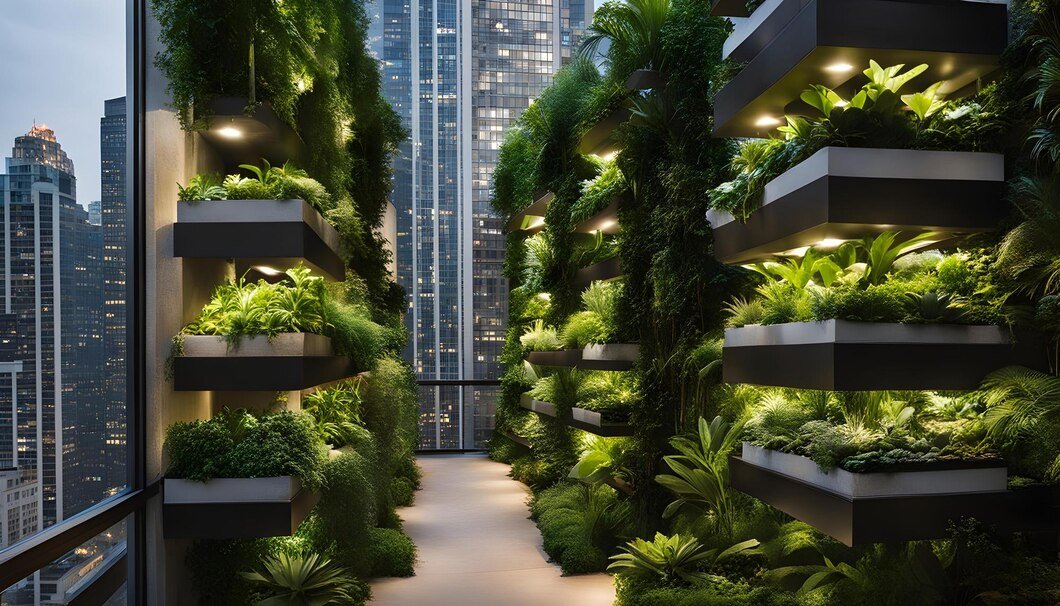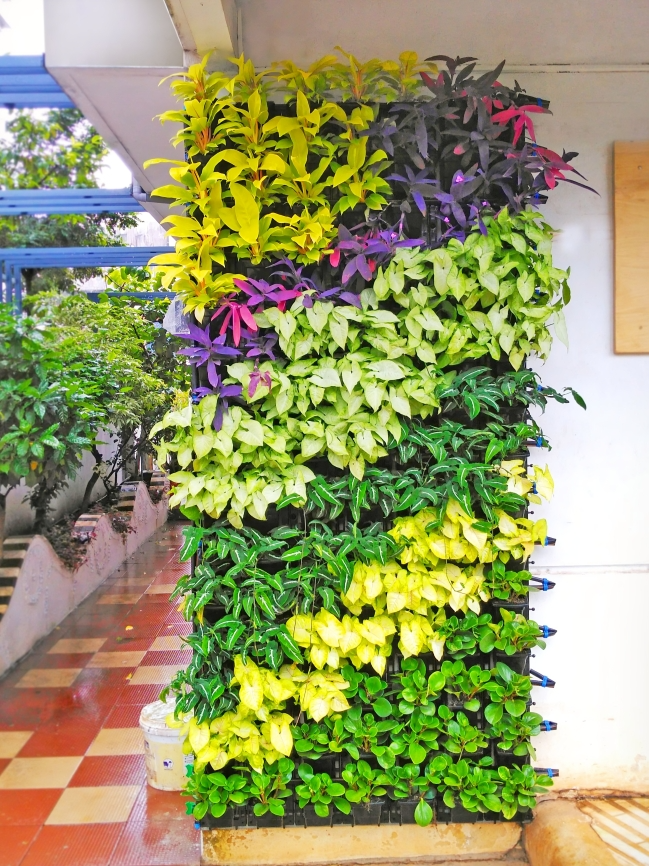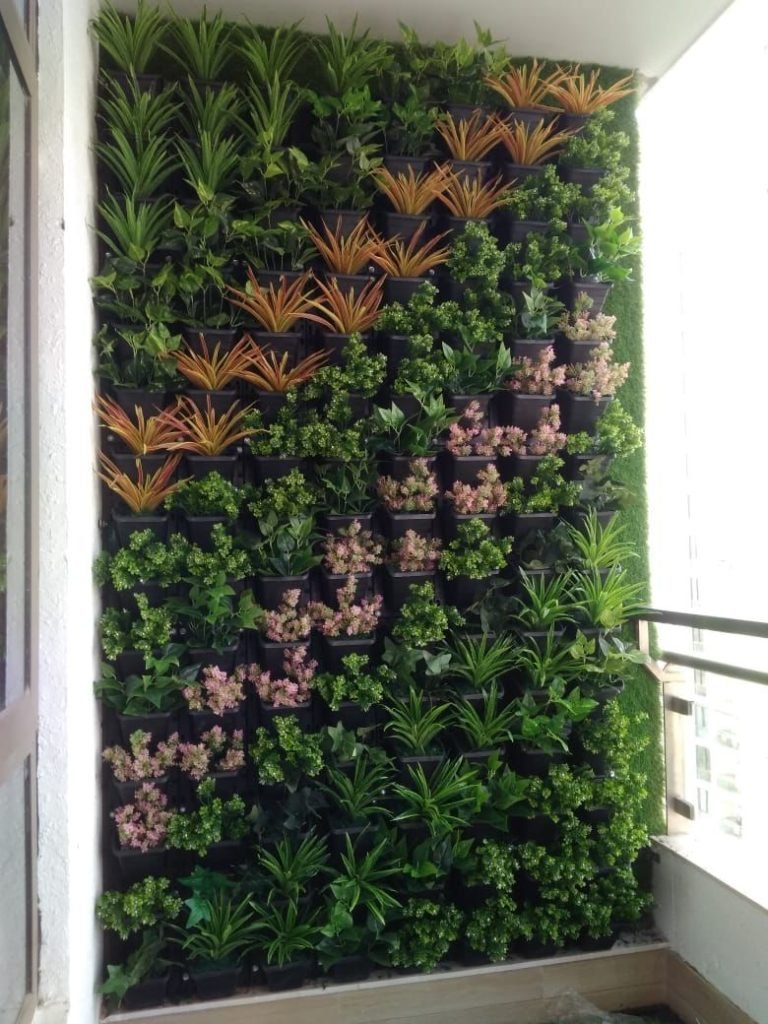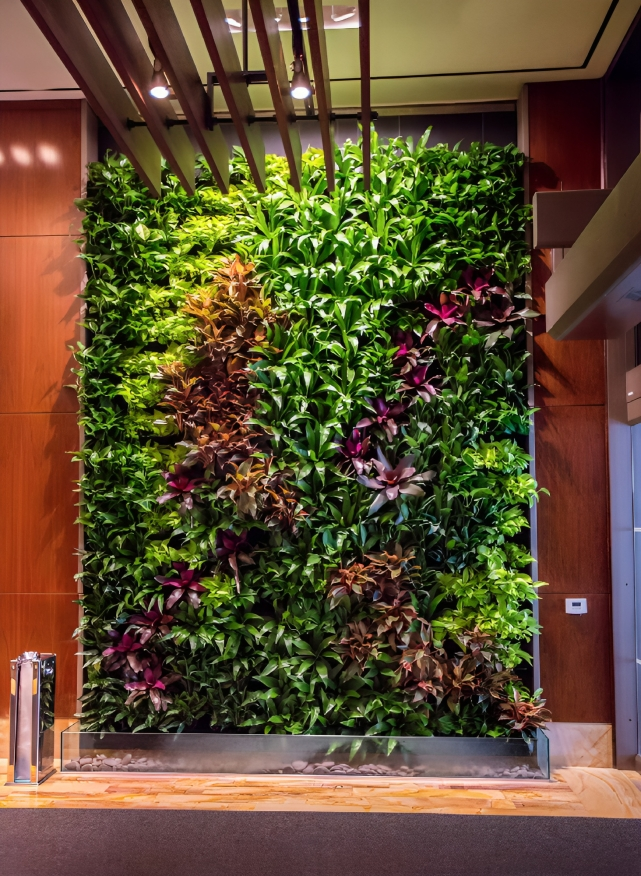Innovative Vertical Gardens: A New Landscape for Sustainability
In the pursuit of sustainability, our relationship with nature has become a central focus. As urbanization continues to reshape our environments, the integration of green spaces has become imperative not only for aesthetic purposes but also for environmental health. Among the many innovative solutions emerging, vertical gardens stand out as a captivating and sustainable way to bring nature into the urban fabric. These gardens, also known as living walls, offer a plethora of benefits, ranging from air purification to biodiversity support, making them a key feature in the development of sustainable cities.”Vertical Garden Design Suppliers in Paschim Vihar”
To Know More About It Please Click Here
What Are Vertical Gardens?
Vertical gardens are essentially vegetated walls that can be installed both indoors and outdoors. They consist of panels or modules that host a variety of plants, from lush foliage to vibrant flowers. These gardens can be implemented on the exterior facades of buildings, within interior spaces, or as standalone structures in urban areas. Their versatility in design and application makes them an attractive option for architects, landscape designers, and urban planners aiming to enhance the greenery in densely populated areas.
Environmental Benefits
The fact that vertical gardens contribute to environmental sustainability is one of their main benefits. These living walls play a crucial role in mitigating urban heat island effects by providing natural insulation, thereby reducing energy consumption for heating and cooling buildings. Additionally, they act as natural air filters, absorbing pollutants and releasing oxygen, which improves air quality and human health in urban environments.
Furthermore, vertical gardens support biodiversity by creating habitats for insects, birds, and other small animals. In densely populated cities where green spaces are limited, these vertical ecosystems serve as crucial refuges for urban wildlife, fostering ecological balance within the built environment.
Social and Economic Impact
Beyond their environmental benefits, vertical gardens also have significant social and economic impacts. Research has shown that exposure to greenery has a positive effect on mental health, reducing stress levels and enhancing overall well-being. By integrating vertical gardens into urban landscapes, cities can create more inviting and livable spaces for residents, ultimately improving the quality of life.
Moreover, these green installations can increase property values and attract businesses to commercial areas. The aesthetic appeal of vertical gardens can draw in customers, leading to higher foot traffic and economic growth in urban centers. Additionally, by reducing energy costs and improving air quality, these gardens offer long-term economic savings for building owners and municipalities.
Innovations in Vertical Garden Technology
Advancements in technology have led to the development of innovative solutions to enhance the efficiency and sustainability of vertical gardens. Automated irrigation systems, equipped with sensors and timers, ensure optimal water usage, preventing overwatering and minimizing waste. Moreover, the integration of modular systems and lightweight materials has made vertical gardens more versatile and easier to install, allowing for greater flexibility in design and implementation.
Furthermore, the use of hydroponic or aeroponic growing techniques eliminates the need for soil, reducing the weight and maintenance requirements of vertical gardens. These soil-less systems also promote water conservation by recirculating and filtering irrigation water, making them ideal for arid climates or water-stressed regions.
Challenges and Future Outlook
Despite their numerous benefits, vertical gardens are not without challenges. Maintaining the health and vitality of plant life in these vertical environments requires careful attention to factors such as irrigation, sunlight exposure, and plant selection. Additionally, the initial cost of installing and maintaining vertical gardens may pose a barrier to widespread adoption, particularly in developing urban areas.
However, as awareness of the environmental and social benefits of vertical gardens continues to grow, so too does their popularity. With ongoing research and innovation, we can expect to see further advancements in vertical garden technology, making these sustainable installations more accessible and practical for urban environments worldwide.
In conclusion
vertical gardens represent a new landscape for sustainability in urban areas. By integrating greenery into the built environment, these living walls offer a host of environmental, social, and economic benefits. As cities continue to grapple with the challenges of rapid urbanization and climate change, vertical gardens stand as a promising solution for creating healthier, more resilient, and more vibrant urban spaces.”Vertical Garden Design Suppliers in Paschim Vihar”







